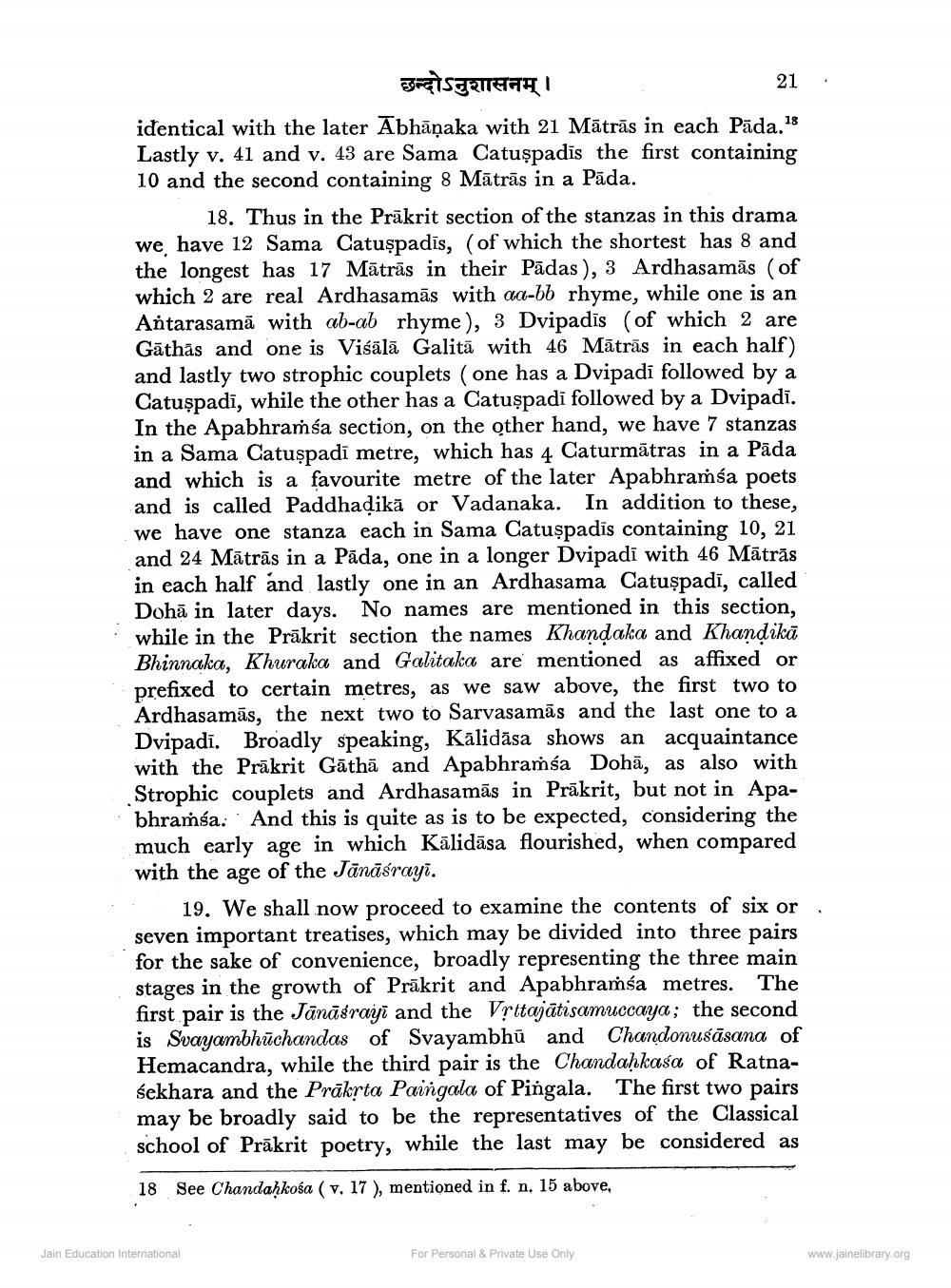________________
छन्दोऽनुशासनम् ।
21. identical with the later Abhāņaka with 21 Mātrās in each Pāda. 18 Lastly v. 41 and v. 43 are Sama Catușpadis the first containing 10 and the second containing 8 Mātrās in a Pāda.
18. Thus in the Prākrit section of the stanzas in this drama we have 12 Sama Catuşpadis, (of which the shortest has 8 and the longest has 17 Mātrās in their Pādas), 3 Ardhasamās (of which 2 are real Ardhasamās with aa-bb rhyme, while one is an Antarasamā with ab-ab rhyme), 3 Dvipadīs (of which 2 are Gāthās and one is Viśālā Galitā with 46 Mātrās in each half) and lastly two strophic couplets (one has a Dvipadi followed by a Catuspadi, while the other has a Catuşpadi followed by a Dvipadi. In the Apabhraṁsa section, on the other hand, we have 7 stanzas in a Sama Catuşpadī metre, which has 4 Caturmātras in a Pāda and which is a favourite metre of the later Apabhramśa poets and is called Paddhadikā or Vadanaka. In addition to these, we have one stanza each in Sama Catușpadis containing 10, 21 and 24 Mātrās in a Pāda, one in a longer Dvipadi with 46 Mātrās in each half and lastly one in an Ardhasama Catuspadi, called Dohā in later days. No names are mentioned in this section, while in the Prākrit section the names Khandaka and Khandikā Bhinnaka, Khuraka and Galitaka are mentioned as affixed or prefixed to certain metres, as we saw above, the first two to Ardhasamās, the next two to Sarvasamās and the last one to a Dvipadi. Broadly speaking, Kālidāsa shows an acquaintance with the Prākrit Gāthā and Apabhramśa Dohā, as also with Strophic couplets and Ardhasamās in Prākrit, but not in Apabhraíba. And this is quite as is to be expected, considering the much early age in which Kālidāsa flourished, when compared with the age of the Jānāsrayi.
19. We shall now proceed to examine the contents of six or. seven important treatises, which may be divided into three pairs for the sake of convenience, broadly representing the three main stages in the growth of Prākrit and Apabhramsa metres. The first pair is the Jānāsrayi and the Vrttajātisamuccaya; the second is Svayambhuchandas of Svayambhū and Chandonuśāsana of Hemacandra, while the third pair is the Chandahkasa of Ratnasekhara and the Prākrta Paingala of Pingala. The first two pairs may be broadly said to be the representatives of the Classical school of Prākrit poetry, while the last may be considered as
18 See Chandahkoša ( v. 17 ), mentioned in f. n. 15 above,
Jain Education International
For Personal & Private Use Only
www.jainelibrary.org




